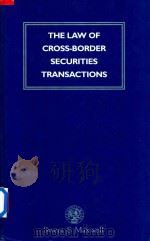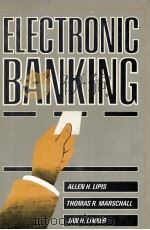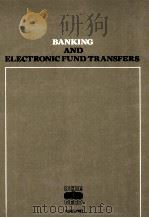《CROSS-BORDER ELECTRONIC BANKING:CHALLENGES AND OPPORTUNITIES:SECOND EDITION》
| 作者 | 编者 |
|---|---|
| 出版 | 未查询到或未知 |
| 参考页数 | 240 |
| 出版时间 | 1995(求助前请核对) 目录预览 |
| ISBN号 | 1859785557 — 求助条款 |
| PDF编号 | 812660818(仅供预览,未存储实际文件) |
| 求助格式 | 扫描PDF(若分多册发行,每次仅能受理1册) |

CHAPTER 1INTERNATIONAL FUNDS TRANSFERS:MECHANISMS AND LAWS(Benjamin Geva)1
Introduction1
Ⅰ.International Large Value Transfers1
(a) Credit transfers1
(b) International credit transfer4
(c) Concurrent international transfers and Herstatt risk7
Ⅱ.Large Value Transfer Systems: Components, Risks and Models9
(a) LVTS components10
(b) LVTS risks13
(c) LVTS national models16
(i) United States16
(ii) Switzerland18
(iii) United Kingdom19
(iv) Japan19
(v) Canada20
(vi) France21
(vii) Germany22
(viii) The European Union—Cross-border Transfers23
Ⅲ.The Law of Credit Transfers: Selected Comparative Aspects25
(a) Basic concepts: characterisation, irrevocability and discharge27
(b) Allocation of risks: default by the beneficiary’s bank29
(c) Allocation of risks: default by a bank other than that of the beneficiary30
Conclusion34
CHAPTER 2WHOLESALE FUND TRANSFERS—UCC ARTICLE 4A(Alvin C.Harrell)35
Ⅰ.Introduction and Scope—UCC Article 4A35
Ⅱ.Article 4 Definitions and Scope36
(a) Fundamental concepts36
(b) Scope—payment order must be unconditional38
Ⅲ.Liability for Errors and Unauthorised Orders40
(a) Authority to originate40
(b) Security procedure41
(c) Commercially reasonable procedure required42
Ⅳ.Obligations of a Bank Accepting a Payment Order43
(a) In general43
(b) Misdescription of beneficiary43
(c) Preemption of other state law claims45
Ⅴ.Transmitting the Payment Order47
Ⅵ.Fees and Settlement48
Ⅶ.Payment48
(a) Payment in general48
(b) Payment and discharge between banks49
(c) Obligation of beneficiary’s bank to pay beneficiary50
(d) Payment to the beneficiary51
(e) Payment and discharge51
Ⅷ.Miscellaneous Article 4A Issues52
(a) Variation by agreement or funds-transfer rule52
(b) Effect of creditor process or injunction53
(c) The bank-customer relation54
(d) Rate of interest55
(e) Choice of law55
(f) Statute of limitations56
Ⅸ.Summary and Conclusions UCC Article 4A57
Ⅹ.Regulation J Subpart A: Collection of Checks Through Federal Reserve Banks57
ⅩⅠ.Regulation J Subpart B: Fedwire59
(a) Scope of Subpart B59
(b) Impact of Subpart B60
ⅩⅡ.Federal Choice of Law Provisions61
ⅩⅢ.Wire Transfer Monitoring Rules62
ⅩⅣ.The Treasury “Travel Rule”64
ⅩⅤ.Conclusion65
CHAPTER 3DEMATERIALISATION OF SHIPPING DOCUMENTS(Paul Todd)70
Ⅰ.Why Dematerialise?70
Ⅱ.Electronic Bills of Lading73
Ⅲ.Replacing the Document of Title: Property and Privity Problems75
Ⅳ.The CMI Model78
Ⅴ.Further Comments on the CMI Model84
Ⅵ.An Alternative Model: Bolero84
Ⅶ.Conclusion87
Ⅷ.A Note of Caution88
CHAPTER 4 THE BOLERO SYSTEM(Robert Caplehorn)91
Introduction91
Bolero and Traditional EDI93
The Bolero.net product93
The core messaging platform (inc.diag.)94
Digital signatures (inc.diag.)95
Public key certificates96
Interoperability and standards97
The Bolero Contractual Structure (inc.diag.)97
Enrolment99
LegalBackground99
Legal Requirements for Writing100
Admissibility of Electronic Evidence102
The Transfer of Goods and Other Contracts104
Title registry (inc.diag.)104
Taking security107
Choice of Law and Jurisdiction107
Conclusion108
CHAPTER 5PAYMENT SYSTEMS, DATA PROTECTION AND CROSS-BORDER DATA FLOWS(Jan M.A.Berkvens)109
Introduction109
Payment Transactions109
The Function of Modern Payment Systems110
General110
Banks110
Problem defined in more detail111
Applicability of Privacy Legislation112
General112
Personal data112
Handling of personal data114
Controller116
Payment Transactions and EC Directive116
General116
Personal data117
Controller118
Processor118
Processing119
Auxiliary data (aids)119
Scope of the Directive119
Discussion of Various Articles of the Directive120
Article 7120
Article 8122
Article 8(7)122
Articles 1(2) and 4122
Article 17123
Article 25124
Article 26126
Direct Marketing128
General128
Splitting128
Consequence of splitting128
Secondary use of data128
Conclusion131
APPENDICES TO CHAPTER 5133
A Model Clauses for use in Contracts Involving Transborder Data Flows (International Chamber of Commerce)133
B Draft International Safe Harbor Privacy Principles Issued by the US Depart-ment of Commerce139
CHAPTER 6—CONSUMER ELECTRONIC BANKING(Chris Reed)143
Ⅰ.Introduction143
Ⅱ.Opening a New Account145
(a) Customer identification145
(b) Cross-border collection of customer information146
(c) Making the account contract147
Ⅲ.Providing Account Services148
(a) Access to account information148
(b) Mandate for account transactions150
(c) Performing account transactions152
(i) Basic obligations152
(ii) Cross-border transfers153
(d) Proving the payment message154
Ⅲ.Electronic Cash Products155
Ⅳ.Controls on Customer Terms and Conditions156
(a) Self-regulation157
(b) Legislative controls161
(i) General consumer protection legislation161
(ii) Specific legislation162
Ⅴ.Conclusions—The Future Development of Consumer Electronic Banking164
CHAPTER 7—PAYMENT SYSTEMS FOR E-COMMERCE(Trystan Tether)167
Introduction167
Desirable Features of an E-commerce Payment Mechanism168
The current dominance of the credit/debit/charge card169
How Conventional Payment Cards Work169
Connected Lender Liability in the UK173
The Problems with Conventional Payment Cards174
Cost174
Limitations on who can receive payment using Conventional Payment Cards176
Limitations on who can use Conventional Payment Cards to make payment176
Lack of anonymity177
Security177
Who bears the security risk in Conventional Payment Card misuse situations?178
The Opportunity for Alternative Payment Systems181
Two different types of systems which have developed181
A typical account-based system183
The advantages of an account-based system183
Money laundering Regulations compliance188
A Typical Cash-Based System190
What kinds of system exist at present?194
The advantages of a cash-based system194
Complications for a cash-based system196
Conclusion198
CHAPTER 8—ELECTRONIC MONEY(Laura Edgar)201
Introduction201
What is electronic money?202
How does electronic money work?202
Smart cards203
Software Systems203
Regulating the Issuers of Electronic Money204
Redeemability205
Supervisory regime206
Money Laundering209
The Contractual Relationship210
Communication of Contractual Terms211
Right of withdrawal213
Information subsequent to a transaction213
Securing storage of electronic money213
Loss and fraudulent use of electronic money214
Obligations on the issuer216
Security breaches and technological failures217
Customer Data218
Conclusions219
CHAPTER 9THE COMPUTERISATION OF THE SECURITIES MARKETS: FROM SECURITIES TO INTERESTS IN SECURITIES(Dr Joanna Benjamin)223
Introduction223
The Impact of Collaterisation224
Securities Settlement225
Property Rights in Interests in Securities228
Transfers229
Securities Collateral231
Conclusion232
Index235
1995《CROSS-BORDER ELECTRONIC BANKING:CHALLENGES AND OPPORTUNITIES:SECOND EDITION》由于是年代较久的资料都绝版了,几乎不可能购买到实物。如果大家为了学习确实需要,可向博主求助其电子版PDF文件。对合法合规的求助,我会当即受理并将下载地址发送给你。
高度相关资料
-

- India and Southeast Asia : challenges and opportunities
- 1996 Konark Publishers in association with India International Ce
-

- CHALLENGES AND OPPORTUNITIES IN MATERIALS SCIENCE AND ENGINEERING ANNIVERSARY VOLUME
- 1976 ELSEVIER SEQUOIA
-

- AN INTRODUCTION TO MONEY AND BANKING SECOND EDITION
- 1975 The Dryden Press
-

- NORTH AMERICAN FREE TRADE AGREEMENT OPPORTUNITIES AND CHALLENGES
- 1993 ST.MARTIN'S PRESS
-

- SOUTH ASIA THE CHALLENGES AND OPPORTUNITIES OF THE 1990S
- 1993 ICS PRESS
-

- The Law of Cross Border Securities Transactions
- 1999 Sweet & Maxwell
-

- AUTOMOTIVE ELECTRICAL AND ELECTRONIC SYSTEMS SECOND EDITION
- 1994 GLENCOE/MCGRAW-HILL
-

- INTERNATIONAL MANAGEMENT TRENDS,CHALLENGES AND OPPORTUNITIES
- 1998 SOUTH-WESTERN COLLEGE PUBLISHING
-

- PROFESSIONAL COMCEPTS AND CHALLENGES SECOND EDITION
- 1997 W.B.SAUNDERS COMPANY
-

- NEUTRON CROSS SECTIONS SECOND EDITION
- 1958 BROOKHAVEN NATIONAL LABORATORY UPTON
-

- COMMUNITY NUTRITION CHALLENGES AND OPPORTUNITIES
- 1999 PRENTICE-HALL.INC
-

- ELECTRONIC BANKING
- 1984
提示:百度云已更名为百度网盘(百度盘),天翼云盘、微盘下载地址……暂未提供。➥ PDF文字可复制化或转WORD


